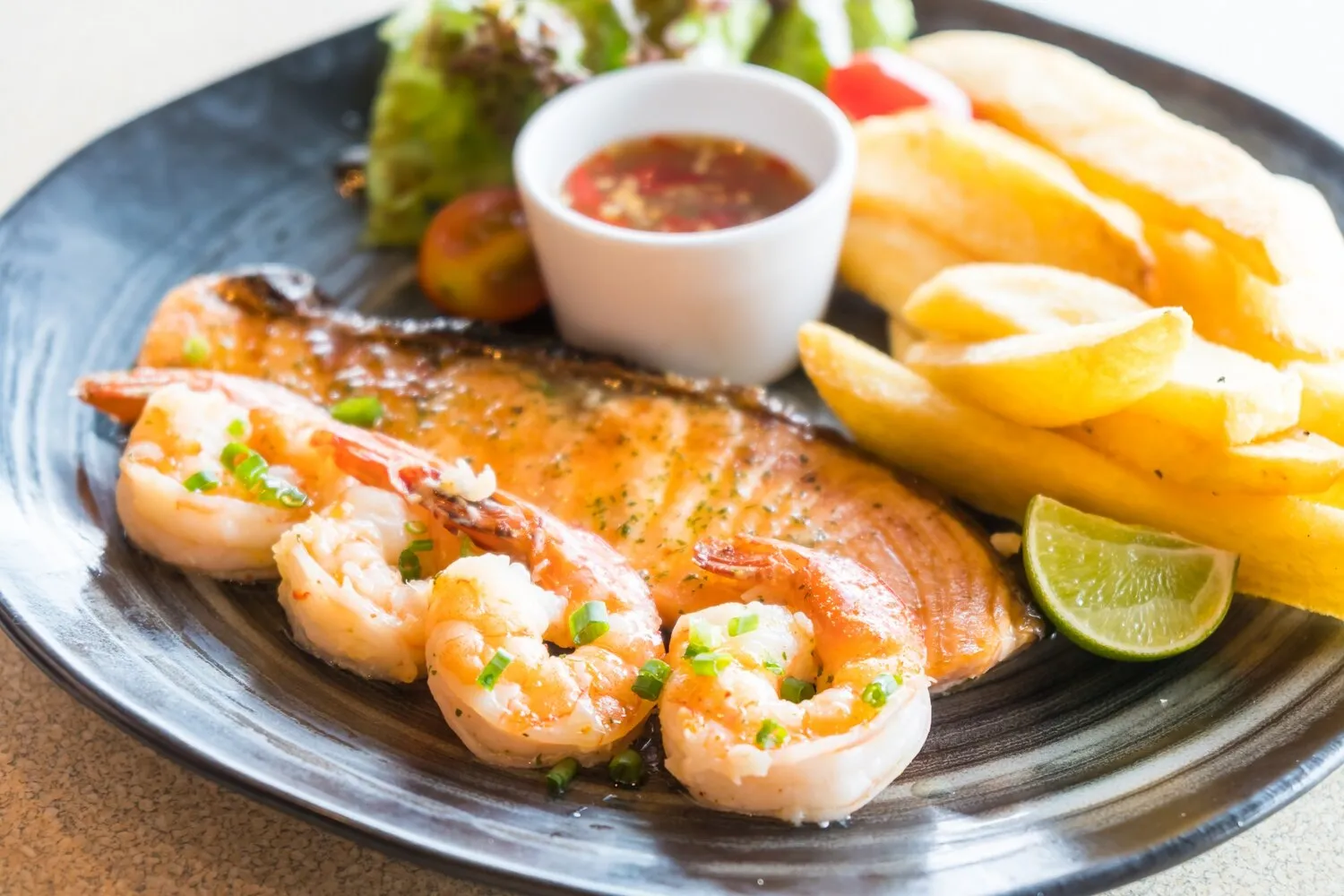
Roast Duck Cantonese Style
Roast duck carved cantonese style. Served with sauce.
Nutrition Facts
* The % Daily Value (DV) tells you how much a nutrient in a serving of food contributes to a daily diet. 2,000 calories a day is used for general nutrition advice.
Two Dishes Cookshop
Roasting techniques have been used in Chinese cuisine for centuries, with different dynasties and regions developing their own unique methods. Cantonese roast duck, also known as Peking Duck's southern cousin, is believed to have been influenced by the techniques developed for Peking Duck, though it has evolved its own distinct style over time, emphasizing a crispy skin and succulent meat.
Cantonese roast duck holds significant cultural importance, often served during celebrations, family gatherings, and special occasions. It symbolizes prosperity, good fortune, and togetherness.
Festive Occasions
Roast duck is a staple at banquets, Chinese New Year feasts, and other festive events, representing abundance and good luck for the coming year.
Family Gatherings
Sharing a roast duck is a communal experience, encouraging family bonding and connection. The carving of the duck is often performed with precision and care, reflecting the importance of the dish.
Skill and Craftsmanship
The preparation of Cantonese roast duck requires skilled techniques and precise timing, highlighting the artistry and culinary expertise of the chef. Achieving the perfect balance of crispy skin and juicy meat is a testament to the chef's dedication.
Cantonese roast duck boasts a symphony of flavors, combining savory, sweet, and aromatic notes. The key lies in the perfectly rendered, crispy skin, the juicy and flavorful meat, and the accompanying sauce which balances the richness of the duck.
The duck is typically seasoned with a blend of five-spice powder (star anise, cloves, cinnamon, Sichuan peppercorns, and fennel seeds), ginger, garlic, scallions, soy sauce, rice wine, and sugar. This marinade infuses the duck from the inside out. The skin is often glazed with a mixture containing maltose or honey, giving it a glossy appearance and a slightly sweet taste as it roasts. The accompanying sauce is usually a plum sauce or hoisin-based sauce, providing a tangy and sweet contrast to the savory duck.
Duck Selection
Choose a duck with a good fat layer under the skin, as this will render during roasting and contribute to the crispy texture. Look for ducks that are plump and have smooth, unbroken skin.
Air Drying is Key
Proper air-drying is crucial for achieving crispy skin. After marinating and glazing, hang the duck for several hours, or even overnight in a cool, well-ventilated area, to allow the skin to dry out completely.
Temperature Control
Maintain a consistent roasting temperature to ensure even cooking and prevent the skin from burning. Some recipes call for a two-stage roasting process, starting at a lower temperature and finishing at a higher temperature to achieve optimal crispness.
Proper Carving
Cantonese roast duck is traditionally carved with precision, separating the crispy skin from the meat. This allows diners to enjoy both textures and flavors separately. The remaining meat is often chopped and served on the bone.
Explore additional Cantonese dishes and restaurants
Explore CantoneseDiscover top dining spots and culinary experiences in Peterborough.
Explore PeterboroughLearn more about the food culture, restaurant scene, and culinary heritage of Canada.
Explore Canada